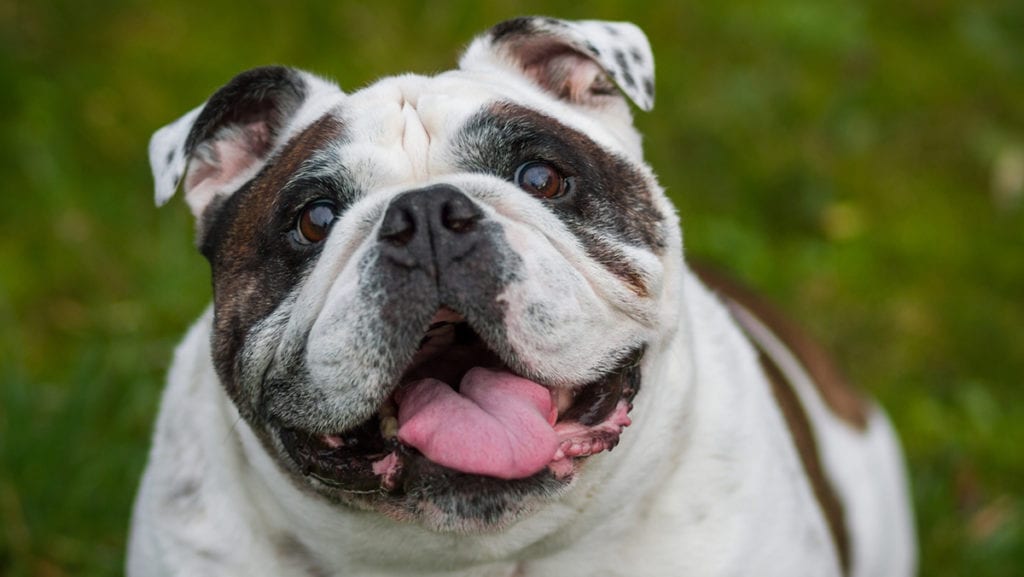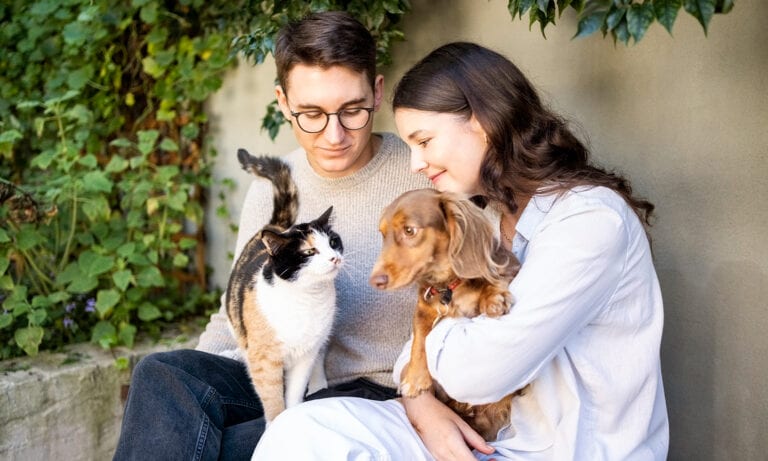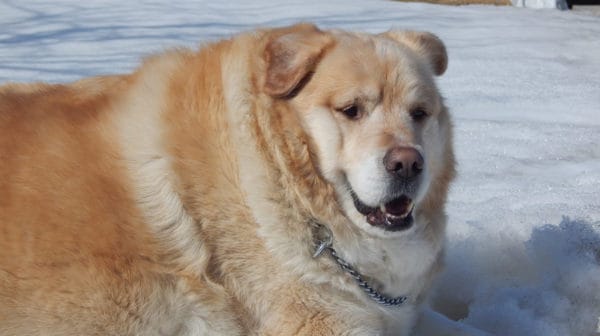If your overweight dog has been on a dog weight-loss diet but the needle on the scale won’t budge, you might be feeling frustrated and ready to give up. But don’t let your dog fall off the diet wagon just yet.
With a little detective work, and the help of your veterinarian, you can get to the bottom of your dog’s diet debacle. Here are 10 reasons why the weight might not be coming off.
1Eating Too Many Calories
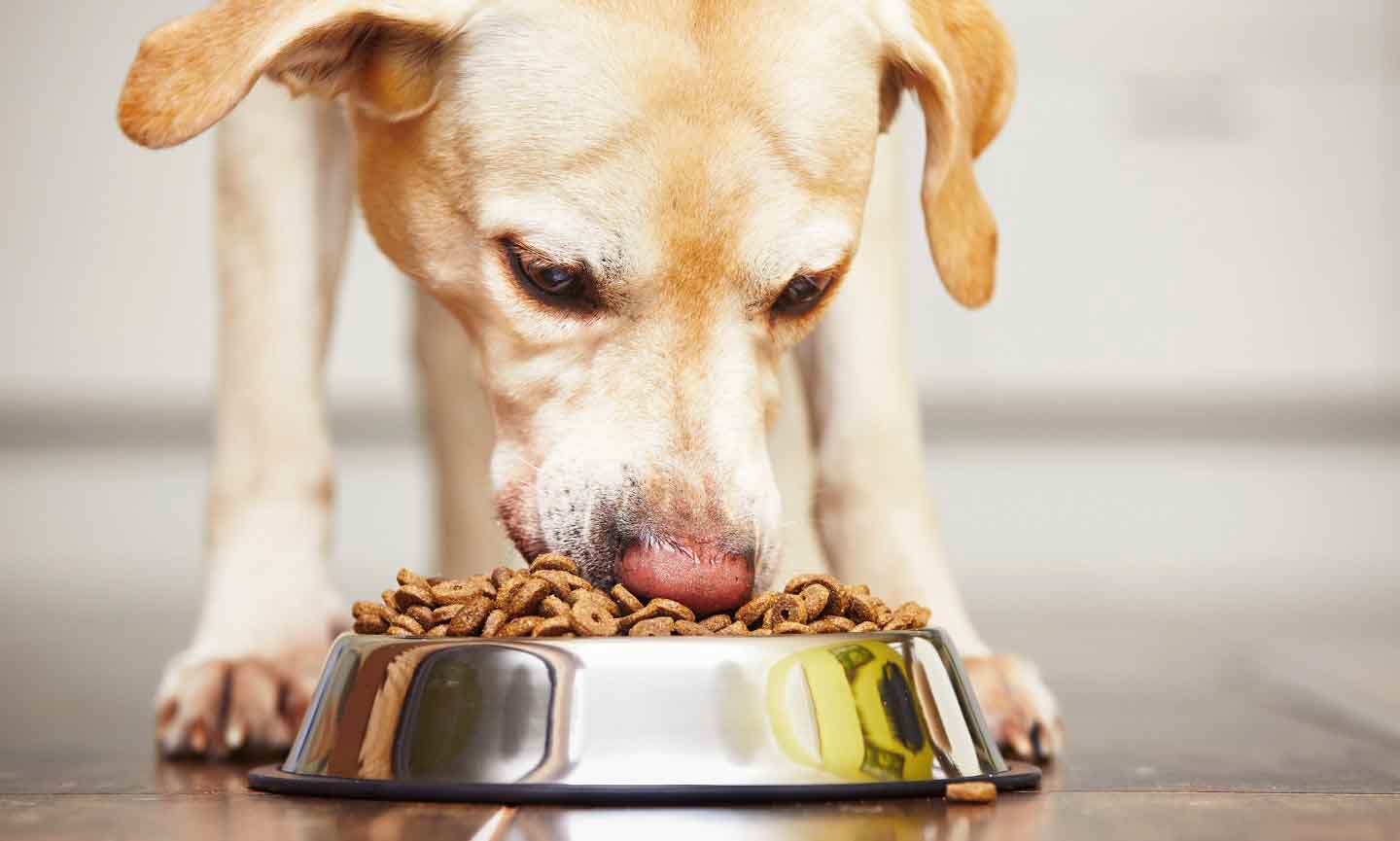
Dog weight loss is usually a simple case of math. In order to stimulate the body to tap into fat stores for energy, the number of calories your dog consumes must be less than the number of calories they expend through exercise or normal physiological functions, such as digestion, powering their internal organs or making hormones.
What people often don’t understand is that if you overfeed your dog, even a little bit, those calories add up over time. So for example, if you feed your large dog a heaping cup of food instead of a measured one, those extra calories might be sabotaging your weight-loss efforts. In a small dog, even a couple extra kibbles each day add up to a lot in a little body.
So, if your casual approach to cutting calories isn’t, well, cutting it, then it is time for stricter calorie counting and a dog weight loss plan.
Don’t worry—canine calorie counting for dogs is much easier than for humans because dogs typically eat just one thing: kibble. Note: If you feed your dog a varied diet, it might be easier for you to stick to dry dog food during the weight loss phase.
When creating a diet for dogs, your veterinarian can tell you exactly how much to feed your dog. From there, just follow their instructions. Don’t forget to add any dog treats into the overall daily calorie count!
Another important way to increase calorie expenditure is to increase your pet’s daily exercise. If you aren’t walking your overweight dog, then now is the time to start. Even a little extra calorie burn can make a big difference, so take them for a walk, play some fetch or go for a hike—just make sure to get your dog moving every day.
If your dog hasn’t been exercising, it’s a good idea to check with your veterinarian before you start to ensure that your dog is healthy and ready to play.
2Extra Feeding by Family Members

One of the most common reasons dog weight-loss plans fail is because not all of the humans in the dog’s life are on the same page. If there are multiple people living in your home or taking care of your dog, then there are multiple hands feeding your dog. It can get even more complicated when there are children in the picture, because they might not understand that everything is best in moderation. If you are serious about your overweight dog losing weight, then it’s time to gather all the caretakers in their life and have a talk.
Point out that your pup’s burgeoning waistline is a big problem. Obesity can cause health problems like:
- Type 2 diabetes
- High blood pressure
- Shortened lifespan
- Increased pain from arthritis
All of these can reduce your dog’s quality of life. So yes, your dog needs everybody who cares for them to stick to their weight-loss plan.
Show everybody exactly how much your dog can eat, and appoint one person to feed them every day. Set aside the treats for the day, and tell the family that when the treats are gone for the day, no more treats can be given until the next day. Make sure everybody is on board, and then see if the pounds melt away.
Get more “petiquette” tips on preventing others from giving your dog food.
3Stealing from Another Pet’s Bowl
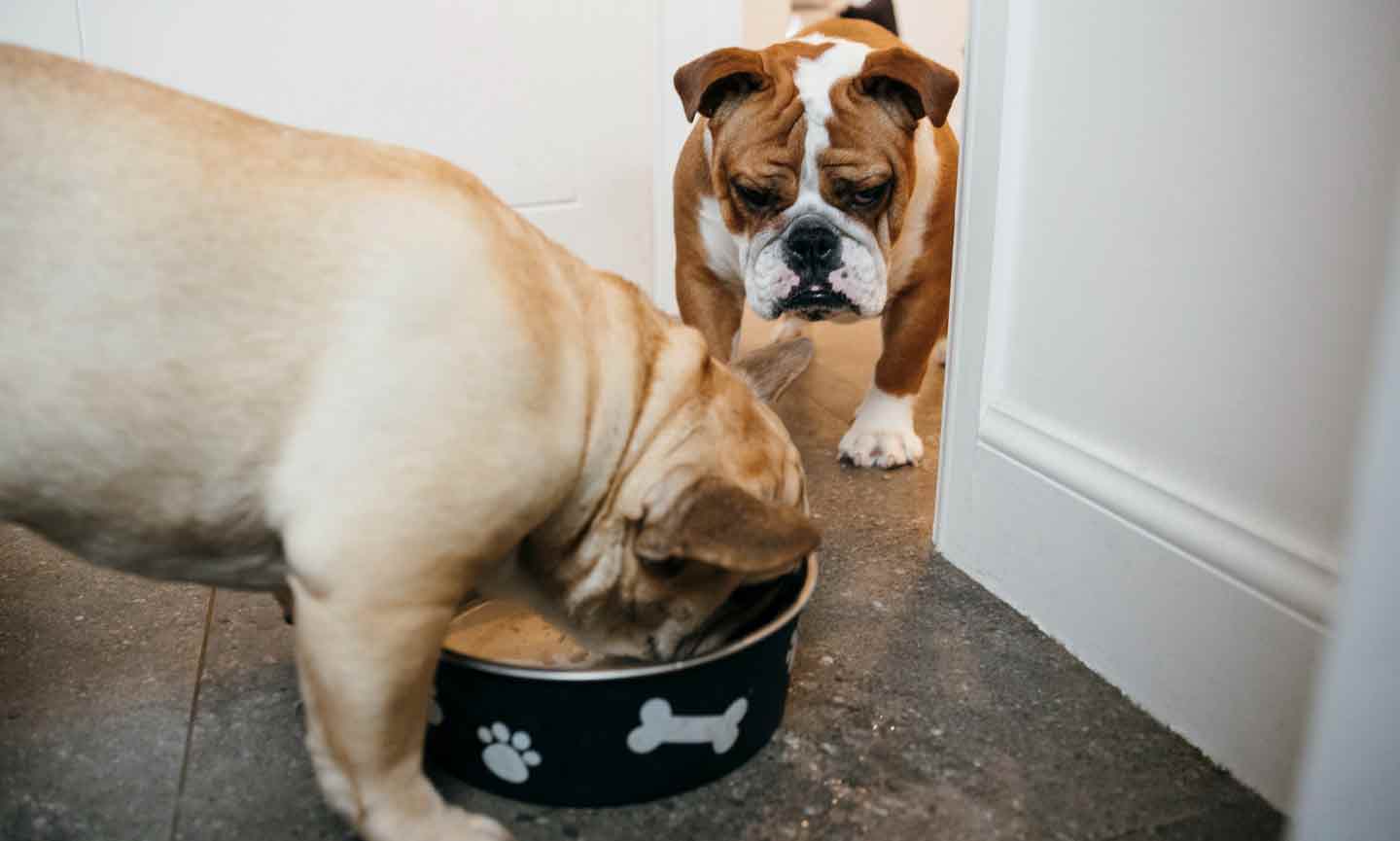
Another common problem is an overweight dog stealing food from the other pets in a multi-pet household. The best way to prevent this problem is to feed your dieting dog separately from the other animals. Remember to pick up other pets’ bowls after they are finished eating.
If you have cats, another solution may be to put the cats’ food bowls in a place your dog can’t access, such as on a high cat shelf.
Whatever you choose, stay vigilant to ensure your dog is eating only what they’re allowed.
4Hormones
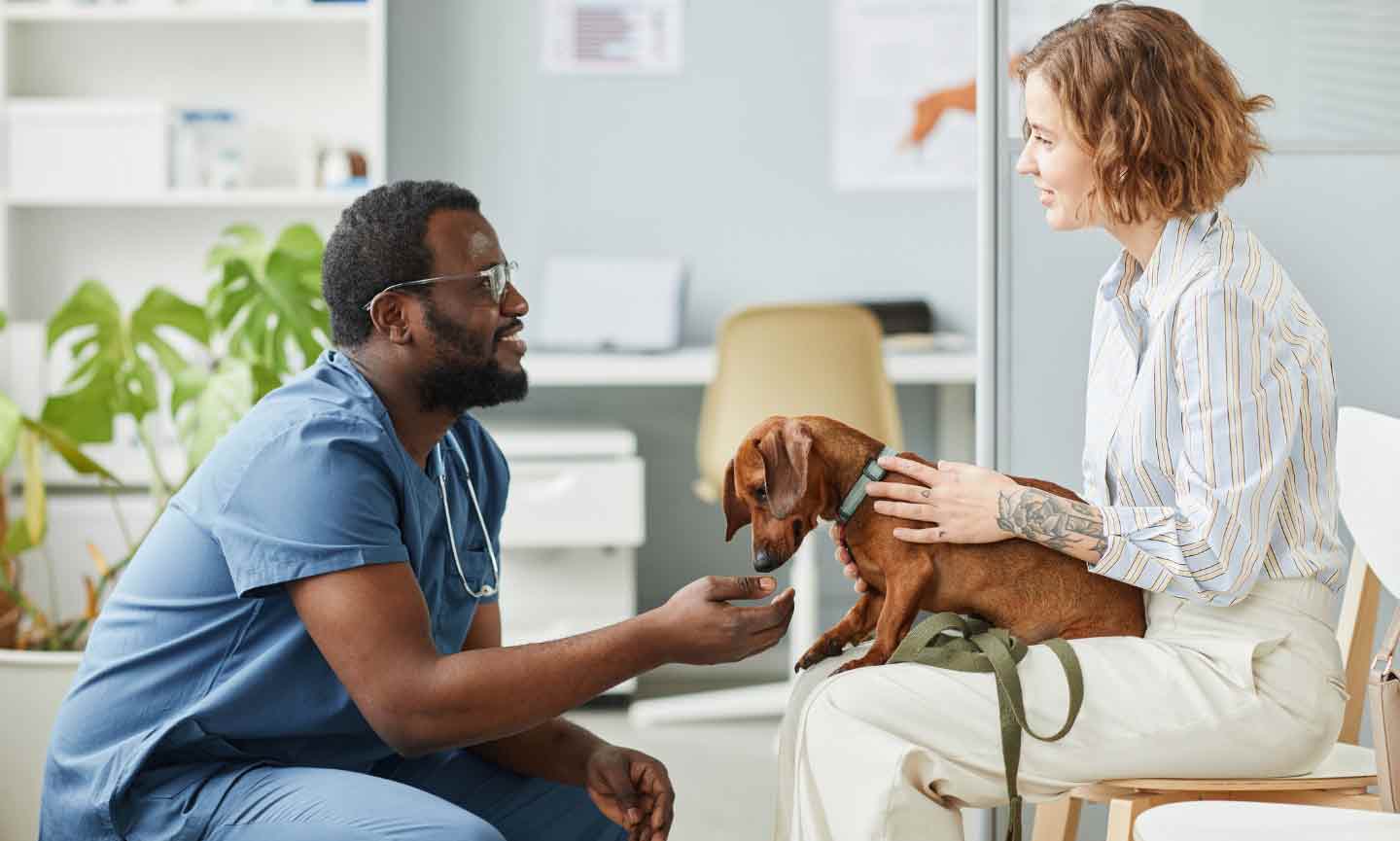
5Osteoarthritis

6Cancer
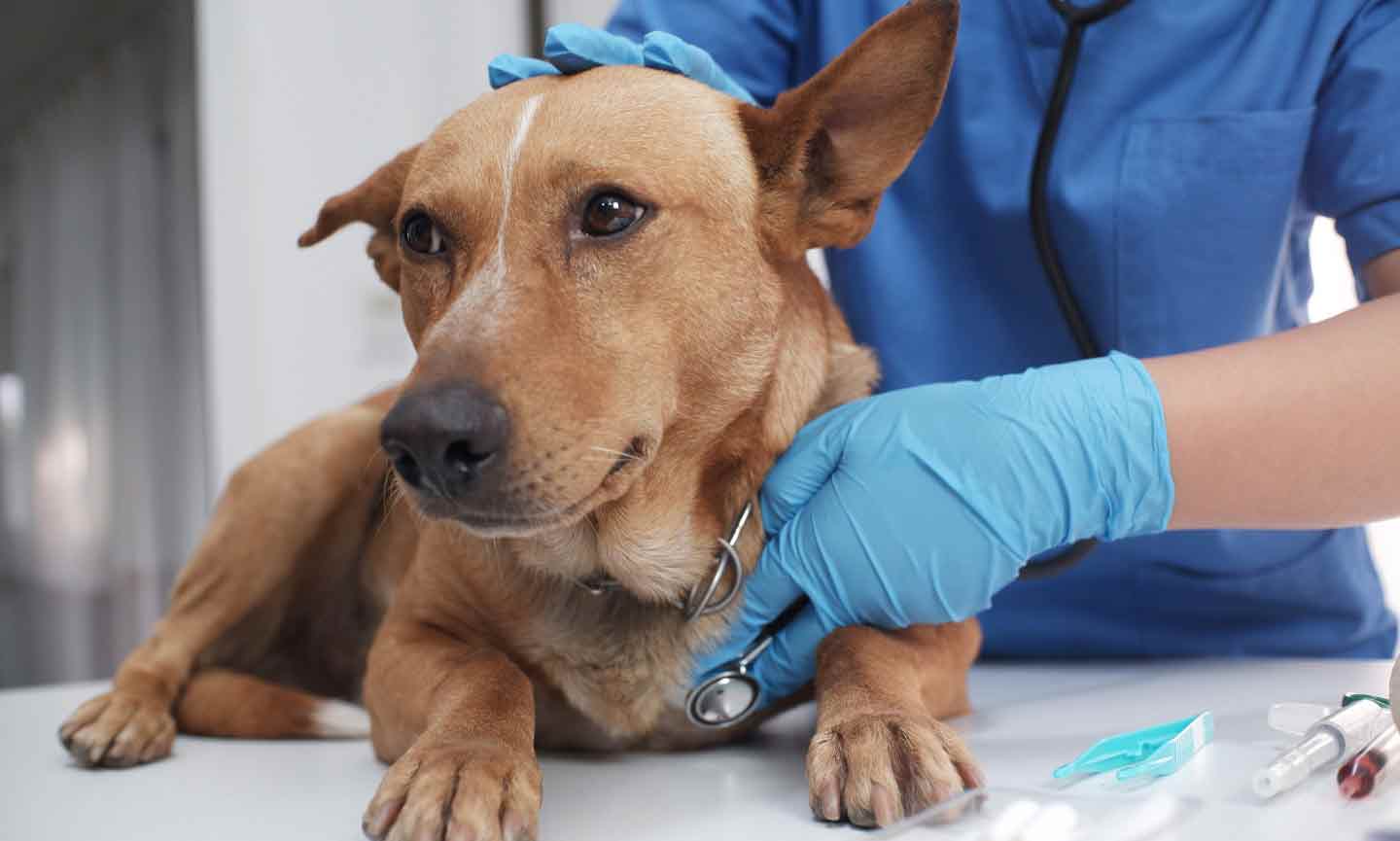
7Breed
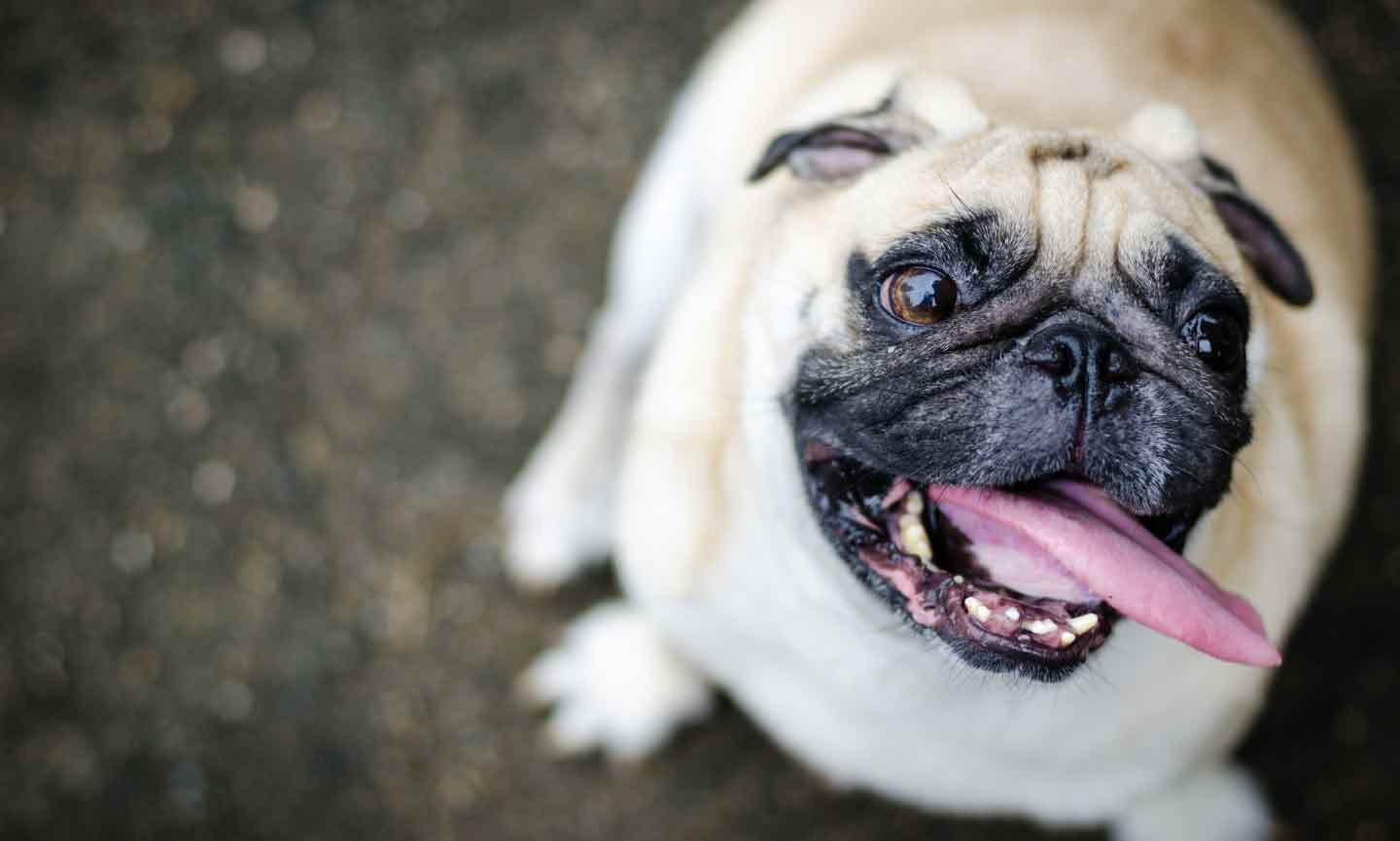
Some dog breeds are more likely to struggle with weight issues than others. Whether they are a highly food motivated eager eater or have couch potato problems, these breeds seem to pack on pounds faster than others. In addition, very small dogs can gain weight quickly even if they are eating just a few extra calories every day—just one extra kibble can add up over time! If you have one of these breeds or a mixed breed that includes one of these breeds, take extra care to keep them at a healthy weight:
8Aging
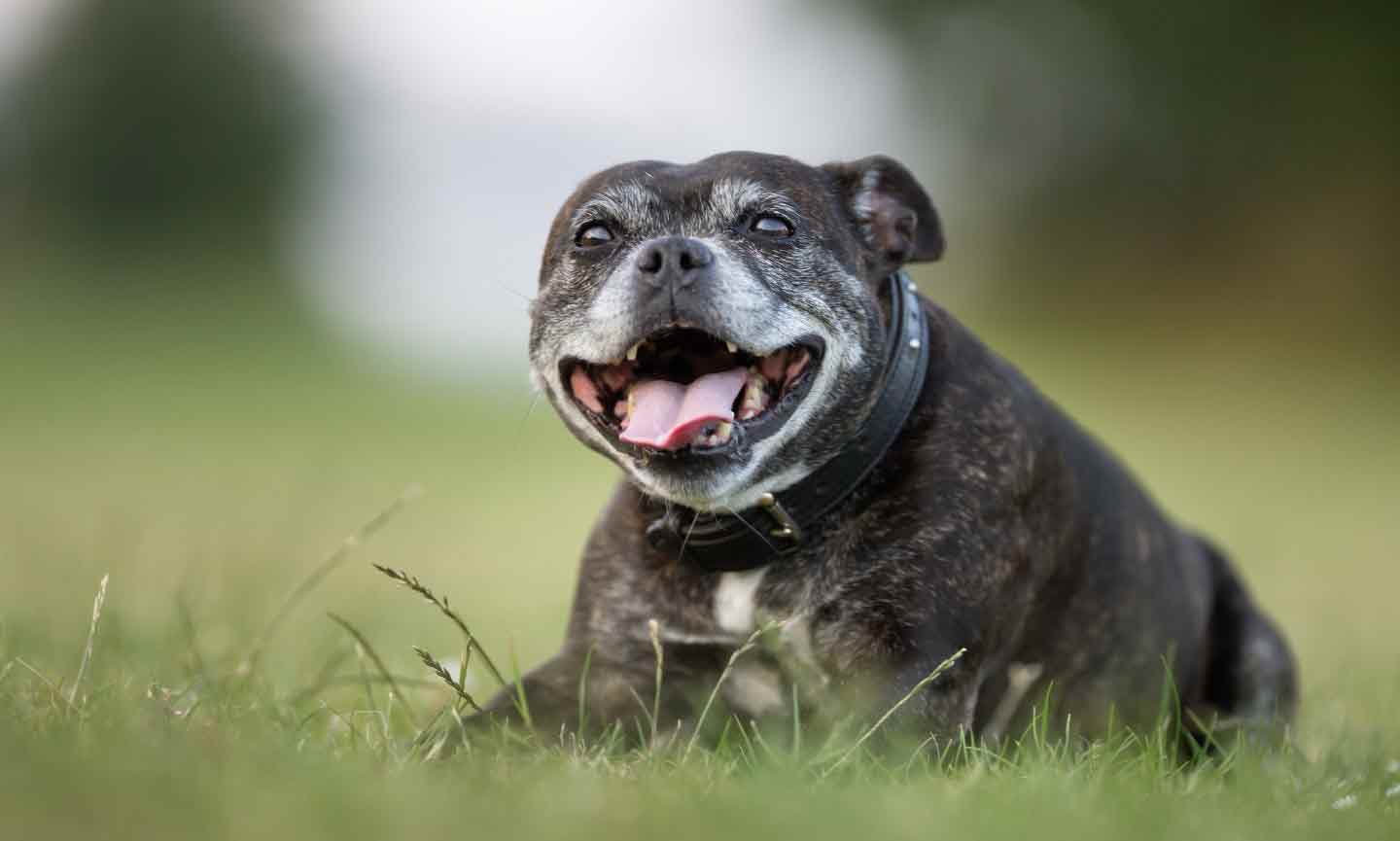
9Feeding the Wrong Dog Food
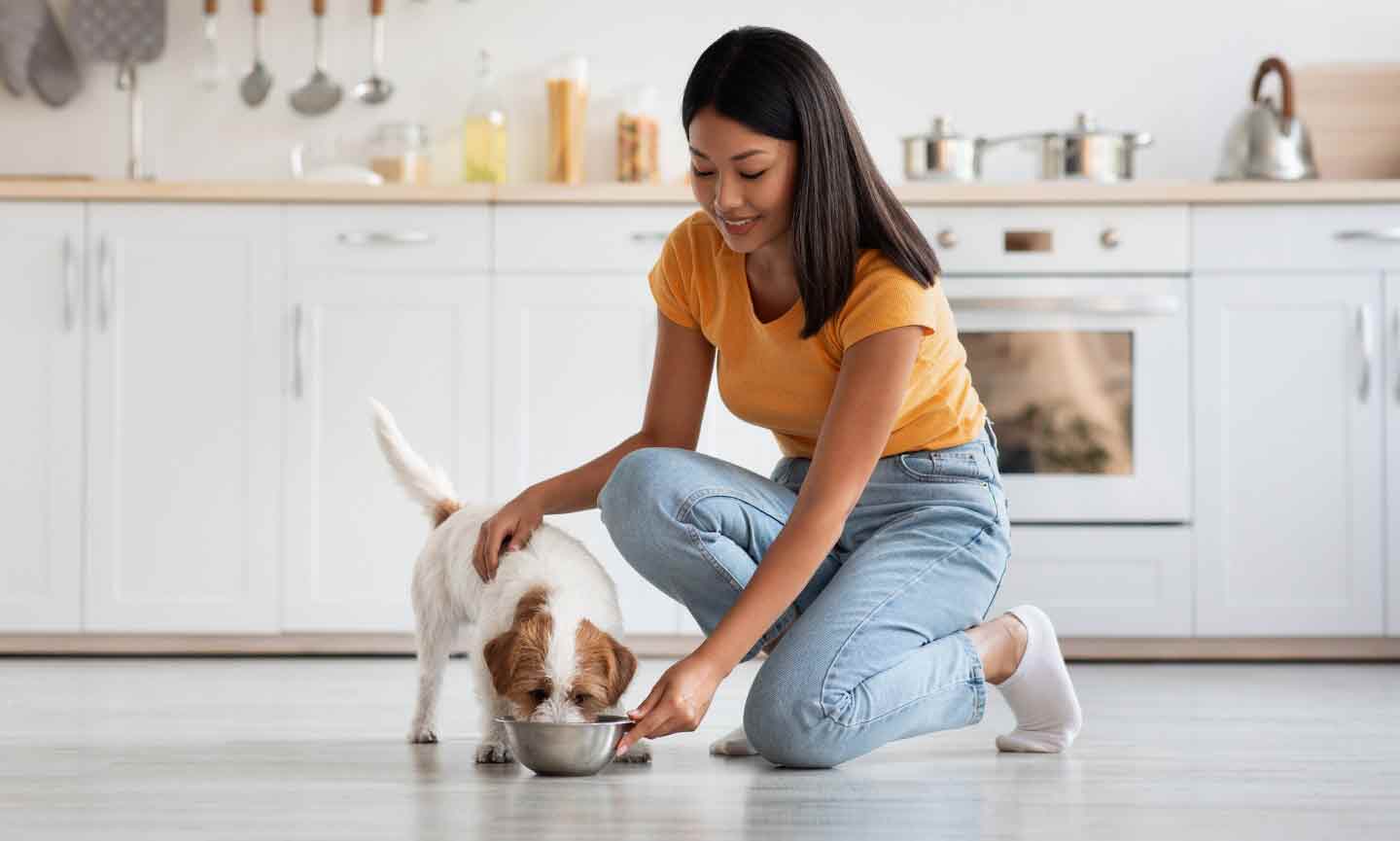
In general, if you want to facilitate weight loss in your dog, look for foods that are labeled for weight loss. These complete and balanced foods will have lower calories, higher fiber to help the dog feel full, and often contain L-carnitine and antioxidants. Your vet will have access to therapeutic weight loss foods that can really help, so don’t hesitate to ask them for recommendations.
Some dogs can also benefit from eating a combination of canned and dry food, as canned food is higher in moisture and lower in calories and carbohydrates. It is also helpful to avoid extra calories from excessive fat, and to avoid treats or foods that are high in simple carbohydrates or sugar, especially high calorie dog treats, chews, cookies, and human foods that are fatty, sugary (including fruit), or full of carbs.
10Spaying and Neutering
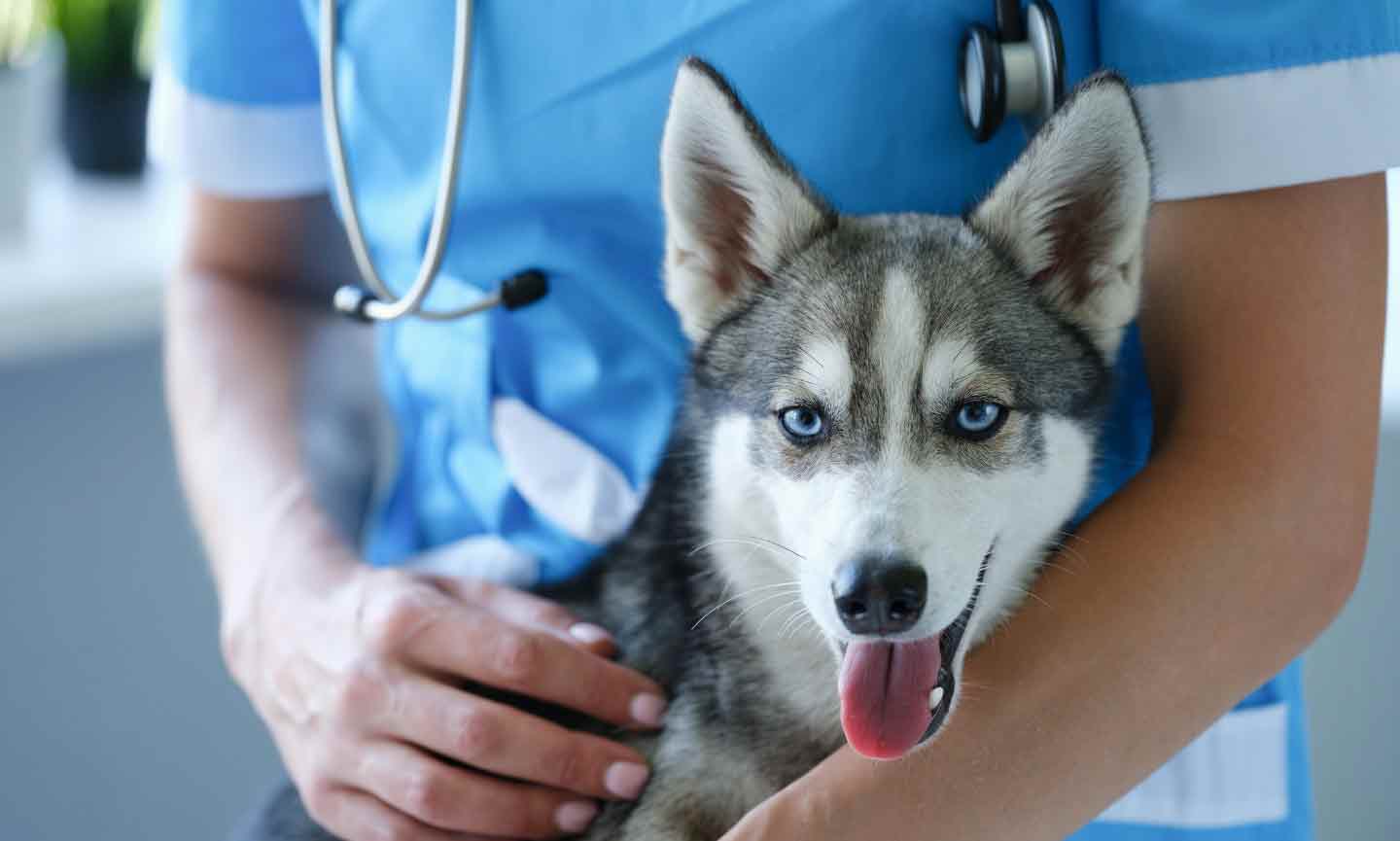
How Can I Tell If My Dog Is Overweight?
If you don’t know what you are looking for, it can be tricky to know if a dog is overweight or not. In general, you can use a combination of behavioral and physical clues to let you know where your dog falls on the body condition spectrum.
Wait—what do you mean, body condition? Well, to determine whether your dog is overweight, your vet will assess their body fat using a body condition score chart, like this one from Purina.
Alternatively, you can visually inspect your dog from above. When you look down on your dog’s body, you should see a nice tuck where their ribs end in the middle of their trunk. Try feeling your dog’s ribs—if you can’t feel them, then your dog is too heavy. You can read more about physical signs of obesity here.
Some behavioral clues that your dog could be too heavy include:
- Trouble jumping up
- Less playful than usual
- Lagging behind on walks
- Gets tired and hot easily
- Difficult grooming, leading to skin fold problems, excessive dandruff, hair mats, or otherwise unkempt haircoat
These signs can also indicate joint pain or cardiovascular problems, so if you see them, schedule an appointment to have your dog checked by your veterinarian, who also just so happens to be your best resource for advice on your dog’s weight.
More Healthy Dog Tips
Share:
